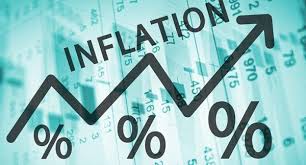The inflation rate at ex-factory prices for all goods and services saw a significant increase in January 2025, rising to 28.5% from 26.1% in December 2024. This surge in inflation reflects the current economic challenges facing the country.
The month-on-month producer inflation also experienced a notable uptick, reaching 3.6% between December 2024 and January 2025. This increase signifies a growing trend in inflationary pressures within the production sector.
Within the industry sector, excluding the construction sector, the Producer Price Inflation (PPI) rose from 40.2% in December 2024 to 43.7% in January 2025. The construction sector itself saw a jump in inflation to 29.8%, while the Services sector registered a rate of 7.7% in January 2025.
Specific sub-sectors such as Mining and quarrying (47.5%), Construction (29.8%), and Accommodation and food service activities (29.0%) recorded inflation rates above the national average of 28.5%. Conversely, Water supply, sewerage, and waste management activities had the lowest rate at 4.8% in January 2025.
In the manufacturing sub-sector, three major groups stood out with inflation rates higher than the sector’s average of 19.9%. The Manufacture of basic metals led with 49.5%, followed by the Manufacture of motor vehicles, trailers, and semi-trailers at 35.8%, and the manufacture of leather and related products.
Within the Services sub-sector, the Transport and Storage sub-sector saw a slight decrease in inflation, dropping by 1.1 percentage points from 23.1% in December 2024 to 22.0% in January 2025. The Accommodation and Food Services sub-sector also experienced a decline from 30.4% to 29.0% during the same period. The Information and Communication sub-sector maintained a relatively low inflation rate of 4.2% in January 2025.
Overall, the latest data on producer inflation underscores the challenges facing various sectors of the economy and highlights the need for proactive measures to mitigate the impact of rising prices on businesses and consumers.








